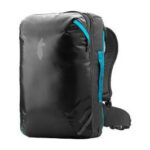Traveling internationally with children requires careful preparation, and understanding the necessity of a Parental Consent Form For Travel is paramount. Whether you’re planning a family vacation or your child is traveling with a guardian or just one parent, having the correct documentation can prevent delays and ensure smooth travels. This guide will walk you through everything you need to know about parental consent forms for travel, ensuring your family trips are as stress-free as possible.
For any child under the age of 18 traveling internationally, it’s essential they possess their own travel documents. This includes a valid passport and potentially a visa, depending on the destination country’s requirements. Beyond these standard documents, a parental consent form becomes crucial in specific scenarios.
When is a parental consent form required? Primarily, it’s needed when a child is traveling without both parents or legal guardians. This encompasses several situations:
- Traveling with only one parent: If your child is traveling internationally with only one custodial parent, immigration authorities, particularly in countries like the U.S., may require evidence of permission from the non-traveling parent. This precaution is to prevent international child abduction. A notarized parental consent form addresses this concern directly.
- Traveling with a guardian or other adult: If a child is traveling with a grandparent, family friend, or another adult who is not their legal guardian, a parental consent form is almost always necessary. This document confirms that the parents have granted permission for this adult to travel with their child.
- Unaccompanied Minors: Although airlines have specific procedures for unaccompanied minors, a parental consent form can still be a helpful supplementary document, especially if requested by the airline or destination country.
What should be included in a parental consent form for travel? A robust parental consent letter should contain the following details:
- Child’s Full Name and Date of Birth: Clearly state the child’s identity.
- Traveling Adult’s Full Name(s): Identify who is accompanying the child.
- Travel Dates and Destination: Specify the duration and location of the trip.
- Consent Statement: A clear statement granting permission for the child to travel with the named adult. A recommended phrase is: “I acknowledge that my child is traveling outside the country with [the name of the adult] with my permission.”
- Notarization: For increased validity, especially for U.S. travel, notarizing the consent form is highly recommended.
- Contact Information: Include contact details for the non-traveling parent(s) for verification purposes.
- Custody Documentation (If Applicable): Parents with sole custody should carry a copy of their custody documents as additional proof.
For parents who frequently cross borders by land with a minor, carrying a parental consent letter from the other parent is advisable, even for short trips.
If your child is traveling alone by air as an unaccompanied minor, it’s critical to contact the airline directly. Airlines have specific age restrictions, forms (unaccompanied minor form), and fees for this service. They will also have requirements regarding who can drop off and pick up the child, often demanding identification and contact information from both parties. Always confirm with the airline about:
- Age requirements for unaccompanied minor service.
- Booking options for connecting flights for unaccompanied minors.
- Necessary documents and associated fees.
In conclusion, a parental consent form for travel is a vital document to ensure hassle-free international travel for children, particularly when traveling without both parents. Being well-prepared with a properly executed parental consent form, and understanding airline policies for unaccompanied minors, will contribute significantly to a smoother and more enjoyable travel experience for your family.

